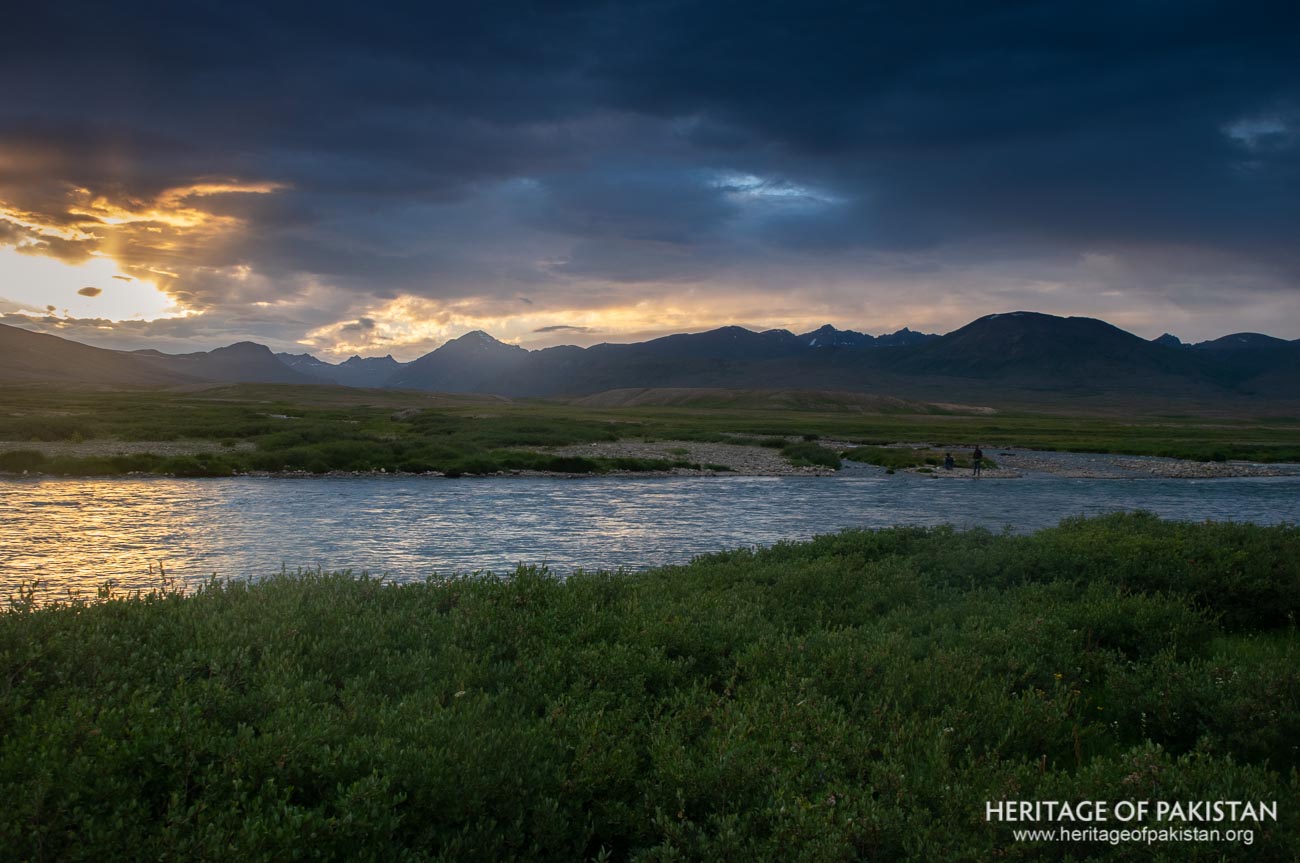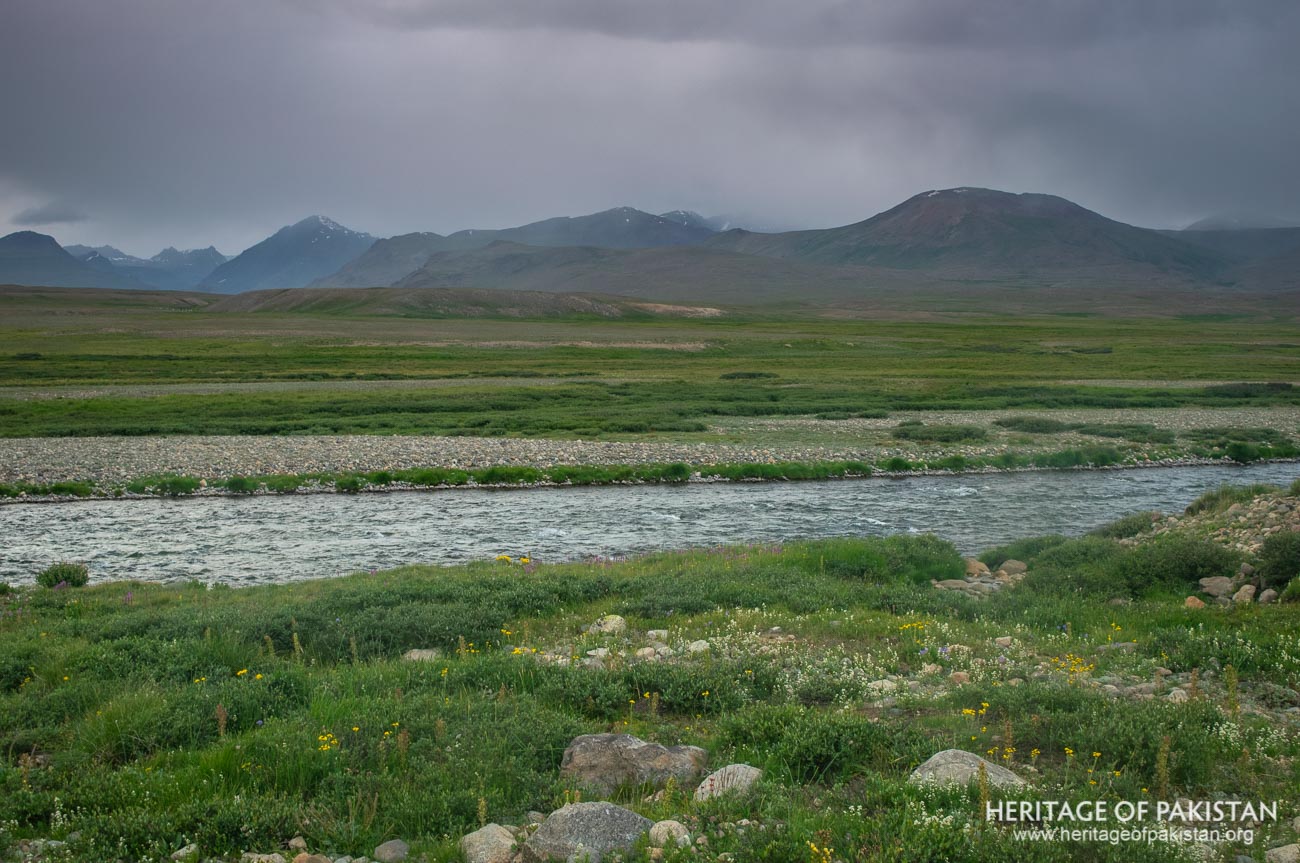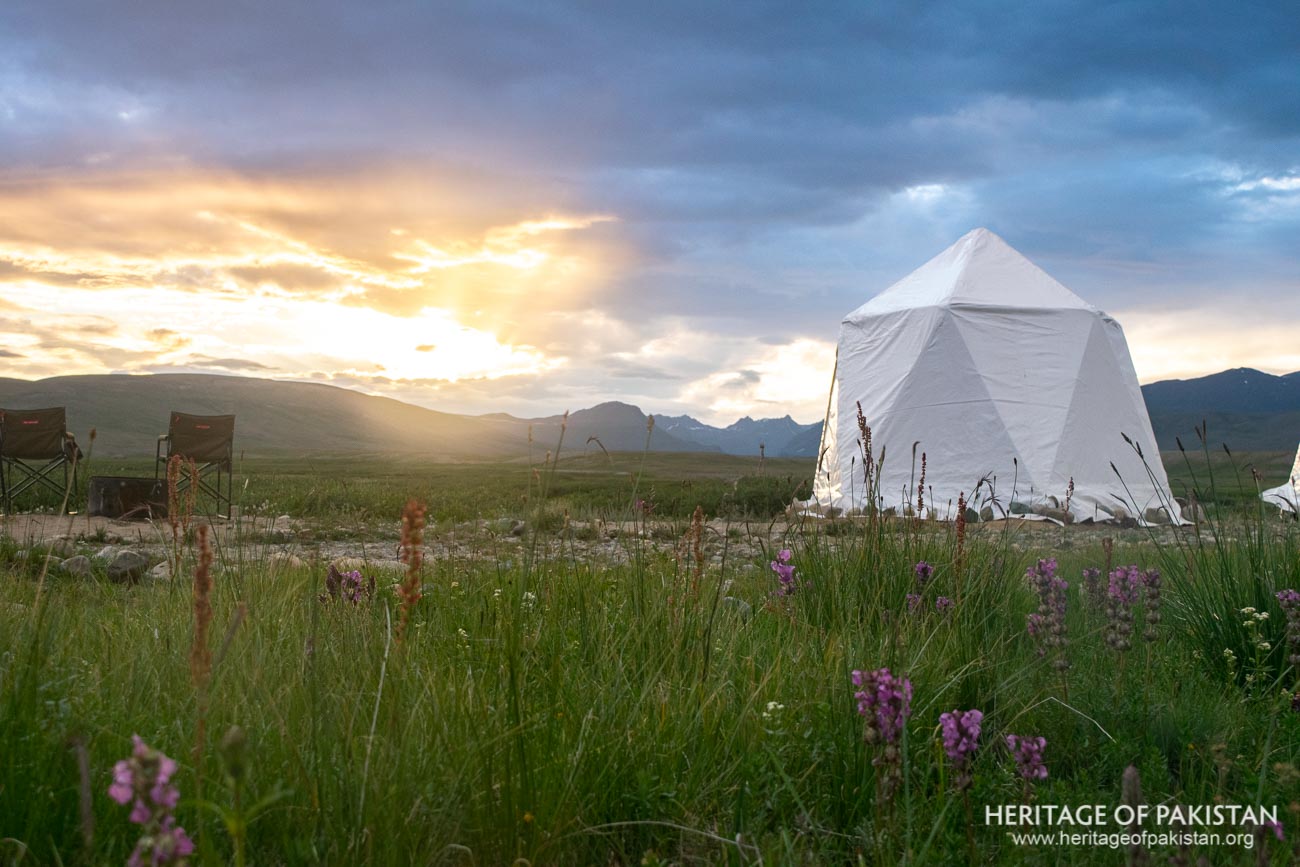Did You Know?
Deosai National Park stands at an average elevation of over 4,114 meters, making it one of the highest plateaus in the world
35°01'36.2"N 75°24'49.0"E
![]()
On the UNESCO World Heritage Site Tentative List
Deosai National Park stands at an average elevation of over 4,114 meters, making it one of the highest plateaus in the world
The Best Time to Visit Gilgit Baltistan Region is Summers. Preferably from April to September. Winters are Extremely Cold and Snowfall blocks most of access. Hence Winters are not recommended.


Within the vast expanse of Deosai National Park, lies the river Bara Pani, an important landmark in the National Park. Positioned at an altitude of 3901m (12,798 feet), it stands as one of the primary rivers coursing through the park and is a prominent attraction for visitors and campers. The spot offers a mesmerizing view of the sunset and presents itself as a vantage point for absorbing the panoramic beauty of the Deosai plains. The Milky Way is clearly visible at night while you spend the night at Bara Pani Deosai National Park, making it an unforgettable experience.
Deosai National Park, approximately 63 km from Skardu, sprawls over an area of roughly 3626 km² and has an average elevation of 4114 m, making it the world's second-highest plateau. The park is notable for its abundant biodiversity in addition to its geological beauty. Several threatened species, such as the Himalayan Bear, Ladakh Ural, Cape Hare, Himalayan Marmots, Snow Leopard, and Tibetan Wolf are present in Deosai National Park.
Shatung, Bara Pani, and Kala Pani are the three main river systems that constitute Deosai's hydrology. These rivers combine to feed the Shigar River, an important Indus River tributary. Deosai, together with Sheosar Lake, is regarded as one of the world's highest freshwater wetlands. Efforts are also underway to designate wetlands of Deosai as a RAMSAR site.

Bara Pani hosts multiple camping sites and is a preferred location for tourists aiming to spend a night amidst Deosai's splendor. However, visitors must be prepared for considerably cold nighttime temperatures and ensure adequate arrangements. Temperatures can become freezing especially around the Bara Pani due to the proximity to the river and tourists are advised to keep proper warm clothes, including a jacket.

Situated at an impressive altitude of 3,901m (12,798 feet), Bara Pani constitutes an important hydrological feature of the Deosai National Park. The vast Deosai plateau's surrounding ice meltwaters serve as the main source of water for this river. Three rivers emerge in the Deosai National Park : Shatung, Bara Pani, and Kala Pani. These are fed by the various smalelr river streams. These rivers in turn collectively contribute to the formation of the Shigar River, a vital tributary feeding into the Indus River.
Ice-capped mountains surround the Deosai plains, and as the ice melts, it irrigates the plains. The meltwater, channels into various alpine streams, including Chogho Chu (Bara Pani), Naqpo Chu (Kala Pani), and Shatong Chu (Shatong Nala). As these streams progress, they eventually evolve into notable rivers such as Sadpara, Shila, Katisho, Shingo, Gultari, and Chillam.
Recognized as a high-altitude wetlands complex, elevated above 3,000 meters, the Deosai plateau embodies various wetland types. Within the broader context of the Himalayas-Karakoram-Hindukush mountain region, it is esteemed as an exemplary representation of high-altitude wetland in Pakistan. Parts of Deosai stand as one of the globe's highest freshwater wetlands.
An extensive variety of fish species inhabit the freshwater ecosystems of Deosai National Park. These fishes are predominantly characterized by Palaearctic attributes, elements of the Central Asian Highlands, and a distinctive incorporation of the species known as Diptychus pakistanicus. A trio of species have been identified within the water bodies of Deosai, specifically, the High-Altitude Loach, Tibetan Snow Trout, and Indus Snow Trout. The Tibetan Snow Trout and Indus Snow Trout manifest abundantly within the broader waters of Deosai National Park.

There are also a lot of interesting native fish species that live on the Deosai plateau. These include the high-altitude loach (Triplophysa stoliczkae), the slate-colored snowtrout (Diptychus maculatus), and the fleshy-mouthed snowtrout (Ptychbarbus conirostris). Dominating the ichthyological spectrum of Deosai, the Slate-colored snow trout stands as the most prevalent species in the region. While traces of this species extend to areas in western China and Nepal, only Deosai boasts a stable population of the Slate-colored snow trout. To safeguard the habitats, fishing is prohibited in the waters of Deosai, and recreational fishing requires a license.
Bara Pani in Deosai National Park is renowned for its array of camping sites, drawing enthusiasts and nature lovers alike. This picturesque location has emerged as a favored destination for overnight stays within the park, offering visitors an immersive experience in the heart of nature. However, the freezing temperatures at Bara Pani can dip significantly, necessitating well-prepared and thorough arrangements to ensure a comfortable and safe stay amidst the colder elements.



All Photographs by Syed Noor Hussain and Sania Azhar.
All Rights Reserved. Photos may be used for Non-Commercial, Educational, Artistic, Research, Non-Profit & Academic purposes.
Commercial uses require licensing agreement.


Add a review